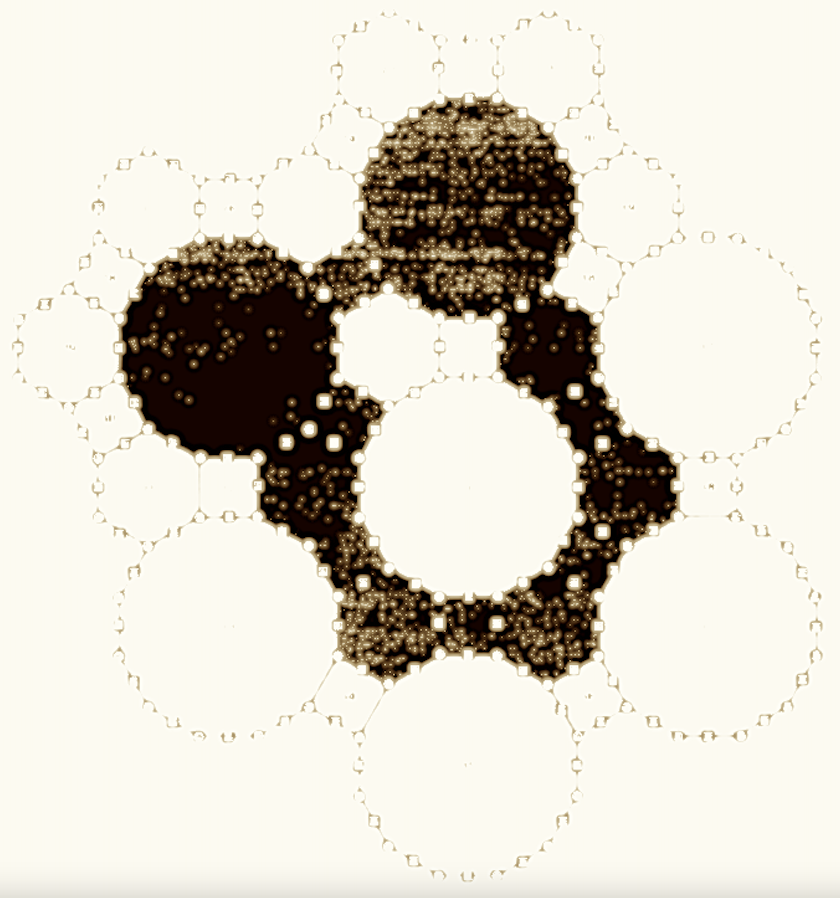In quantum chemistry, electrons don’t orbit the nucleus the way that planets orbit stars. Rather, the odds of finding an electron at various points in the space around the nucleus are what’s calculated. For an atom in its lowest energy state, this probability distribution has a spherical symmetry, with the highest probabilities found in a shell around the nucleus, but with positive, if ever smaller with distance, probabilities for finding it anywhere in the universe. This arrangement, harkening back to the Bohr atom which proposed a more planetary style of motion, is called an orbital, to distinguish it from an orbit. I guess orbitoid sounded too kooky.
For higher energy atoms and in chemical bonds, the shape of the probability distribution is much more complicated. Nuclei, being positively charged, tend to repel each other, but some arrangements of orbitals and nuclei position much of the electron density between two positive centers, such that they shield the nuclei from each other and attract them somewhat. This produces the chemical bond and is known as a bonding orbital. Now, you need to balance positive and negative charges in order to have a neutral molecule, so one thing you do when setting up your calculations is just keep adding electrons (according to the rules) to the orbitals defined by some arrangement of nuclei until everything balances out.
It turns out that only the lowest energy orbitals are bonding. There are higher energy orbitals in which the rules place the electrons, but these do not shield the nuclei from each other the way they do in bonding orbitals. These are called, perhaps unsurprisingly, anti-bonding orbitals. Let’s say you have an arrangement with one bonding and one anti-bonding orbital, and you need to fill them with four total electrons to achieve electrical neutrality, two in the bonding orbital, and two in the antibonding one (one usually deals with electrons in pairs when doing such things). It turns out that “anti-bonding orbitals are more anti-bonding than bonding orbitals are bonding”. Thus, not only do you not get net chemical bonding, you don’t even get a sort of “meh” asociality between the nuclei. You get an actual repulsion.
All this is to try to set up a metaphor, or at least to create a conceptual space in which to seek a metaphor. In the popular science headline clickbait webiverse I notice that there appears to be a consensus that people tend to dislike the idea of losing a hundred bucks more than they like the idea of finding a hundred bucks. It’s a cognitive bias. No doubt there is endless evolutionistiod, genetic determinism type jibberjabber about how there must have been a survival benefit to thinking this way blah blah blah. Even if strong arguments could be made in that direction, it’s certainly not obvious that any such benefit obtains in our current social environment. This phenomenon seems to be consistent with, or perhaps even instrumental in, promotion of negative-sum rather than positive-sum outcomes.
I wonder how hard it would be to find additional examples of similar phenomena, perhaps within thermodynamics itself (my instinct would be to look for entropy-related arguments), but also within game theory, computational neural networks, or even such fascinating novelties as “Wolfram Physics”. I should try to scour various philosophy-of-mind works such as Daniel Dennett’s oeuvre to see if I can find a trace, or even explicit exposition, of this trope. Actually, before that I should follow the clickbait and familiarize myself with the actual work.









